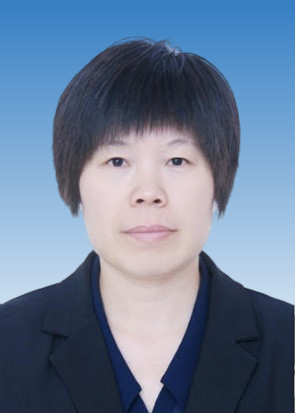
牛灿芳

姓名:牛灿芳
职称:副教授
所属系所:生物农业研究院
办公地点:北京科技大学西三旗校区8号楼205室(北京市海淀区建材城东路10号京城尚德智造产业园)
办公电话:010-82917178
电子邮件:niucf@ustb.edu.cn
科研方向:玉米分子生物学
简 历:
2023至今:北京科技大学生物农业研究院,副教授。
2021-2023:北京科技大学化学与生物工程学院/融合创新研究院,生物与农业研究中心,副教授;
2018-2020:北京科技大学生物与农业研究中心,副研究员;
2017-2018:中国食品发酵工业研究院,副研究员;
2013-2017:中国农业科学院饲料研究所,助理研究员、副研究员;
2011-2012:中国科学院遗传与发育生物学研究所,博士后;
2009-2010:美国凯斯西储大学,博士后;
2004-2008:中国科学院遗传与发育生物学研究所,博士;
2000-2003:河南农业大学,硕士;
1995-1999:河南农业大学,学士;
科研业绩:
已主持或主要参与国家级项目2项。
1,国家重点研发计划项目:玉米产量性状关键基因位点挖掘与应用(2023YFD1200503),2023-2027,70万元,子课题负责人。
2,国家自然科学基金面上项目:27 家族 a-半乳糖苷酶的 Loop 区影响其
底物特异性的分子机理(31402110),2014-2017,23万元,主持;
获得奖励/发明专利:
申请国家发明专利20项,授权专利10项。
1、胃蛋白抗性和耐酸性改良及催化效率提高的植酸酶YeAPPA突变体。第1作者,PCT专利, 美国专利号USPatent 11,155,793,申请号US16/477,903。
2、胃蛋白抗性改良和催化效率提高的植酸酶YkAPPA突变体。第1作者,PCT专利, 美国专利号USPatent 11,028,377,申请号 US16/477,907。
3、植酸酶突变体YkAPPA-L396V、YeAPPA-L396V及其编码基因和应用。第2作者,授权号ZL 2016 1 0527405.X。
4、植酸酶突变体YeAPPA-L162V及其编码基因和应用。第2作者,授权号ZL 2016 1 0527333.9。
5、植酸酶突变体YkAPPA-L327V、YeAPPA-L327V及其编码基因和应用。第2作者,授权号ZL 2016 1 0527413.4。
6、植酸酶突变体YkAPPA-L162V/L327V和YeAPPA-L162V/L327V及其编码基因和应用。第2作者,授权号ZL 2016 1 0523074.2。
7、植酸酶突变体YkAPPA-L162V及其编码基因和应用。第2作者,授权号ZL 2016 1 0526087.5。
8、在植物中赋予植物耐受性的基因及用途。第3作者,授权号ZL 1 2010 8 0066415.9。
9、植物耐逆性相关转录TaWRKY1及其编码基因与应用。第3作者,授权号ZL 2009 1 0090496.5.2。
10、植物耐逆性相关转录因子TaWRKY16及其编码基因与应用。第5作者,授权号ZL 2012 1 0288652.0。
代表性论文论著:
发表文章20余篇,出版英文专著2部,代表性论著如下:(#同等贡献,*通讯作者)
1、 Fang C#, Wu S#, Niu C#, Hou Q, An X, Wei X, Zhao L, Jiang Y, Liu X, Wan X. Triphasic regulation of ZmMs13 encoding an ABCG transporter is sequentially required for callose dissolution, pollen exine and anther cuticle formation in maize. J Adv Res. 2022,18:S2090-1232(22)00208-9. (SCI IF: 12.822)
2、 Zhang S#, Wu S#, Niu C#, Liu D, Yan T, Xie K, Li Z, Wang Y, Zhao W, Dong Z, Ma B, An X, Li J, Wan X*. ZmMs25 encoding a plastid-localized fatty acyl reductase is critical for anther and pollen development in maize. Journal of Experimental Botany, 2021, 72(12): 4298-4318. (SCI IF: 6.992, TOP1区期刊)
3、 Niu C and Wan X*. Engineering a trypsin-resistant thermophilic α-galactosidase to enhance pepsin resistance, acidic tolerance, catalytic performance, and potential in the food and feed industry. Journal of Agricultural and Food Chemistry, 2020, 68(39): 10560-10573. (SCI IF: 5.279, TOP1区期刊)
4、 Bian X#, Li W#, Niu C#, Wei W, Hu Y, Han J, Lu X, Tao J, Jin M, Qin H, Zhou B, Zhang W, Ma B, Wang G, Lai Y*, Chen S*, Zhang J* A class B heat shock factor selected for during soybean domestication contributes to salt tolerance by promoting flavonoid biosynthesis. New Phytologist, 2020, 225(1): 268-283. (SCI IF: 10.151, TOP1区期刊)
5、 Niu C*, Yang P, Yao B. Engineering protease resistant and highly active phytases. Methods in Molecular Biology, 2020, 2091: 155-162.
6、 Niu C, Yang P*. The loop regions and substrate specificity of GH 27 familiy α-galactosidases. Scholarly Journal of Food and Nutrition, 2018, 1: 1-2.
7、 Niu C*, Yang P*, Luo H, Huang H, Wang Y, Yao B*. Engineering of Yersinia phytases to improve pepsin and trypsin resistance and thermostability and application potential in the food and feed industry. Journal of Agricultural and Food Chemistry, 2017, 65(34): 7337-7344. (SCI IF: 5.279, TOP1区期刊)
8、 Niu C*, Yang P, Luo H, Huang H, Wang Y, Yao B* Engineering the residual side chains of HAP phytases to improve their pepsin resistance and catalytic efficiency. Scientific Reports, 2017, 7, 42133. (SCI IF: 4.379)
9、 Niu C, Luo H, Shi P, Huang H, Wang Y, Yang P, Yao B*. N-glycosylation improves the pepsin resistance of HAP phytases by enhancing the stability at acidic pH and reducing the pepsin accessibility to peptic cleavage sites. Applied and Environmental Microbiology, 2015, 82(4): 1004-1014. (SCI IF: 4.792, TOP区期刊)
10、 Niu C, Wei W, Zhou Q, Tian A, Hao Y, Zhang W, Ma B, Lin Q, Zhang Z*, Zhang J*, Chen S*. Wheat WRKY genes TaWRKY2 and TaWRKY19 regulate abiotic stress tolerance in transgenic Arabidopsis plants. Plant Cell and Environment, 2012, 35(6): 1156-1170. (SCI IF: 7.228, TOP1区期刊)
招生计划:每年1-2名硕士研究生
研究生培养情况:联合培养毕业博士生3名,培养毕业硕士生3名


